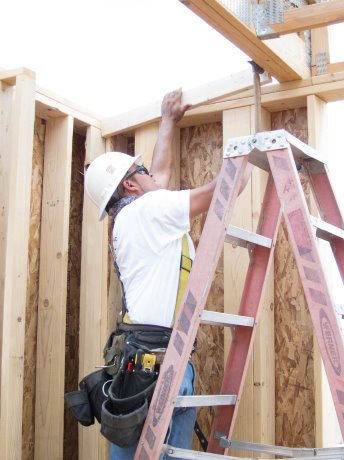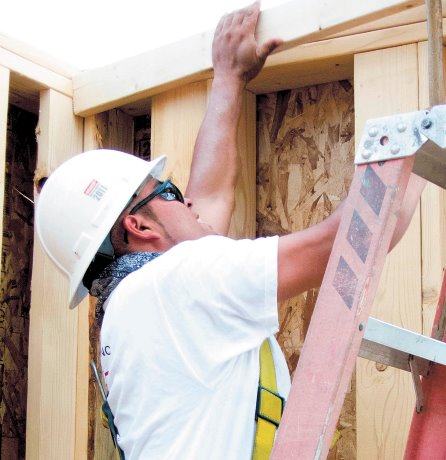Falls are one of the leading causes of injuries to construction workers in B.C. Yet, when it comes to being careful and staying safe on the jobsite, working with ladders — especially stepladders — isn’t always seen to be hazardous. After all, it’s a tool that — some assume — almost anyone can use. Don’t forget, using a ladder at work comes with risks just like any other tool.
From 2013 to 2015, 1,035 workers in the construction industry were injured or killed due to falls from ladders. That’s almost one fall, every day, for three years.
These falls account for 20 per cent of injuries and 24 per cent of claim costs that are fall-related in construction — and falls from ladders reflect the highest proportion of construction-related falls. These can cause serious injuries such as fractures or concussions, even fatalities and are the main reason why no one should underestimate the importance of ladder safety.
Building a culture of safety onsite is important for staying safe at work and for sharing information about specific recurring issues — such as ladder safety; but the best way to reduce the risk of injury from falling is to plan ahead before using a stepladder.
Keeping this in mind and following some simple steps, can help you and your workers stay safe and injury-free.
Start by assessing the hazards
If you do need to use a ladder, ensure that it’s in good condition and is set up on a firm, level surface and at the correct height and/or length to allow you to work safely.
Check the label with the load and duty rating on it and make sure the ladder is the right grade for the task and the industry — typically CSA Grade 1 or better.
Consider safer alternatives
Sometimes, a stepladder isn’t the best tool for the job.
While a ladder may seem like the quick, easy option, you may want to consider if there are safer alternatives available.
For example, platform ladders, stationary or rolling scaffolding, boom or scissor lifts, or other work platforms.
Follow safe work procedures
Whether you use a stepladder or a safer alternative, follow safe work procedures every time. Setting up a stepladder incorrectly puts you and other workers at risk of serious injury.
Using a stepladder correctly
If you do decide to use a stepladder, make sure you’re using it correctly:
- Always maintain three-point contact when climbing the ladder — two hands and one foot or two feet and one hand at all times;
- When you’re doing short duration, light-duty work from the ladder, keep both feet on the same step and support your body (knees or chest) with the ladder to maintain three points of contact, and make sure a safe handhold is close by and available; and
- Always follow the ladder manufacturer’s instructions, and never stand or sit on the top two rungs of any ladder.
Building a "culture of safety"
Safe work procedures and using the correct tool for the job are crucial for staying safe on site, but a proactive, positive attitude about safety at work can be just as valuable.
Building a culture of safety at work means that everyone — from top executives, managers and workers — are all on the same page and working together to make safety a priority at work.
Here are a few ways to get started:
- Have a health and safety program in place that’s accessible to everyone on site;
- Develop initiatives for improving health and safety at work;
- Attend and participate in safety meetings; and
- Address any safety concerns with your manager or supervisor.
Following safe work procedures, developing a culture of safety, and seeking alternative tools for the job may seem time consuming at first, but taking a few extra steps can help you and your workers avoid serious, sometimes life altering injuries.
For more information on ladder safety, see the Construction Safety Series on worksafebc.com/health-safety.

Safe ladder practices are key to help reduce injuries since ladders are a tool many think are easy to use.
Photo: National Institute for Occupational Safety and Health"









Recent Comments
comments for this post are closed